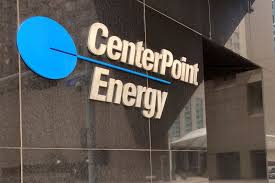CITY OF EVANSVILLE
Board of Public Safety
Civic Center Complex, Room 301
Evansville, IN 47708
812.436.7897
_________________________________________________________________________________________________________
Agenda
August 13th, 2025
Building Commission – Johnny Mc Alister Jr Transportation & Services – Todd Robertson City Engineer’s Office – Mike Labitzke
Police Department – Chief Phillip Smith
Fire Department – Chief Tony Knight
~ Pledge Of Allegiance
A. Business With Representative
Johnathan Siebeking Came Before The Board To Explain Why METS Wanted To Install A New Bus Stop At The Below Location. After
A Brief Discussion The Board Agreed.
Motion By Ken Schultheis To Approve, 2nd By Diane Masterson And So Ordered And Approved The Following
1. Johnathan Siebeking, Director Metropolitan Evansville Transit System, Requests Permission To Install A New
Bust Stop At Approximately 1323 Professional Blvd. This New Stop Will Be Across From The New Rescue
Mission Center For Women And Children.
Ms. Zueck Came Before The Board With Images And A Request To Keep The Dumpster On Bellemeade Ave Instead Of S Englewood.
After Some Discussion The Board Agreed As Long As The Dumpster Was Removed No Later That September 2nd
.
Motion By Ken Schultheis To Approve, 2nd By Diane Masterson And So Ordered And Approved The Following
2. Jill Zueck – Priceless Properties & Construction Management LLC – Coming Before The Board To Discuss The
Dumpster Request For 700 S Englewood Avenue.
B. Old Business
C. Departmental Reports
1. Police Department – Captain John Mc Quay
Motion By Ken Schultheis To Approve, 2nd By Diane Masterson And So Ordered And Approved The Following
a) Request For Permission To Accept The Evansville Police Foundation Donation Of One (1) New K-9 To The
Department.
2. Fire Department – Deputy Chief Kim Garrett
Motion By Ken Schultheis To Approve, 2nd By Diane Masterson And So Ordered And Approved The Following
a) Requests For Permission To Approve Contract With Penn Car, INC. For The Purchase Of 11 Ambulances.
Motion By Ken Schultheis To Approve, 2nd By Diane Masterson And So Ordered And Approved The Following
b) Requests For Permission To Approve Contract With ERS Wireless For A Station Alerting Project.
Motion By Ken Schultheis To Approve, 2nd By Diane Masterson And So Ordered And Approved The Following
c) Requests For Permission To Approve Contract With E.L.I.T.E. To Proctor The 2025 Applicant Oral
Interviews.
Motion By Ken Schultheis To Approve, 2nd By Diane Masterson And So Ordered And Approved The Following
d) Requests For Permission To Accept A Donation From The EFFF For One (1) Ambulance Cot.
Motion By Ken Schultheis To Approve, 2nd By Diane Masterson And So Ordered And Approved The Following
e) Requests Permission To Surplus On Table At End Of Agenda.
Ken Schultheis, President – Appointed by The Mayor Of City Of Evansville – Term: January 8th, 2025 – January 8, 2027
Diane Masterson, Vice President – Appointed by The Mayor Of City Of Evansville – Term: January 8th, 2025 – January 8, 2027
La Toya Johnson, Member – Appointed by The Mayor Of City Of Evansville – Term: January 8th, 2025 – January 8, 2027
Aaron Allen, Counsel Attorney
Board of Public Safety
Evansville, IndianaCITY OF EVANSVILLE
Board of Public Safety
Civic Center Complex, Room 301
Evansville, IN 47708
812.436.7897
_________________________________________________________________________________________________________
3. Building Commission – Kim Josey
Motion By Ken Schultheis To Approve, 2nd By Diane Masterson And So Ordered And Approved The Following
a) Approval To Award The Demolition Contracts On The Following Properties:
1) 1602 Delmar Ave.
– Raze (Demolish) House And Garage – LOW BIDDER – VELPEN – $9600.00
2) 204 E. Iowa St.
– Raze (Demolish) House – LOW BIDDER – VELPEN – $11,900.00
3) 2100 W. Maryland St.
– Raze (Demolish) House And Garage – LOW BIDDER – STEMALY – $6958.00
4) 628 E. Missouri St.
– Raze (Demolish) House – LOW BIDDER – VELPEN – $7250.00
5) 1418 Oakley St.
– Raze (Demolish) Fire Damaged House & Shed – LOW BIDDER – VELPEN – $7420.00
6) 706 N. Third Ave.
– Raze (Demolish) House/Apt. Bldg. _ LOW BIDDER – STEMALY – $11,949.00
7) 2937 Broadway Ave.
– Raze (Demolish) House And Garage – LOW BIDDER – VELPEN – $8250.00
8) 26 E. Franklin St.
– Raze (Demolish) House – LOW BIDDER – STEMALY – $10,413.00
9) 1014 N. Garvin St.
– Raze (Demolish) House – LOW BIDDER – VELPEN – $7890.00
10) 915 Oakley St.
– Raze (Demolish) House – LOW BIDDER – VELPEN – $7340.00
11) 639 E. Tennessee St.
– Raze (Demolish) House And Carport – LOW BIDDER – VELPEN – $7750.00
Motion By Ken Schultheis To Approve, 2nd By Diane Masterson And So Ordered And Approved The Following
b) Approval To Award Emergency Demolition Contracts On The Following Properties:
1) 1205 Harriet St.
– Emergency Due To Collapse Of The Rear Of The Structure – LOW BIDDER – VELPEN
– $7900.00
2) 1003 Keller St.
– Emergency Demolition Due To Severe Fire Damage – LOW BIDDER – VELPEN –
$6800.00
3) 722 E. Virginia St.
– Emergency Demolition Due To Severe Fire Damage – LOW BIDDER – VELPEN –
$15,624.00
c) Approval To Surplus The Following Vehicles:
Motion By Ken Schultheis To Approve, 2nd By Diane Masterson And So Ordered And Approved The Following
1) 2008 Chevrolet Malibu – VIN# 1G1ZG57B684184798 – Plate 73443 – Mileage 57,323
2) 2005 Jeep Liberty – VIN# 1J4GL48K45W693981 – Plate 46607 – Mileage 81,727
4. Special Event Permit – Sgt. Adam Will
Motion By Ken Schultheis To Approve, 2nd By Diane Masterson And So Ordered And Approved The Following
a) WNIN Tri-State Public Media Inc Requests Approval For Their Annual WNIN Kids Fest
CLOSING: Main Street From Riverside To 2nd Street And First Street At Main To Sycamore.
WHEN: Friday, September 19th Through Sunday, September 21st From 4:00 P.M. To 10:00 A.M.
PURPOSE: To Encourage Lifelong Learning & Explore Educational Opportunities For Children And Their
Families.
BARRICADES REQUESTED
Ken Schultheis, President – Appointed by The Mayor Of City Of Evansville – Term: January 8th, 2025 – January 8, 2027
Diane Masterson, Vice President – Appointed by The Mayor Of City Of Evansville – Term: January 8th, 2025 – January 8, 2027
La Toya Johnson, Member – Appointed by The Mayor Of City Of Evansville – Term: January 8th, 2025 – January 8, 2027
Aaron Allen, Counsel Attorney
Board of Public Safety
Evansville, IndianaCITY OF EVANSVILLE
Board of Public Safety
Civic Center Complex, Room 301
Evansville, IN 47708
812.436.7897
_________________________________________________________________________________________________________
Motion By Ken Schultheis To Approve, 2nd By Diane Masterson And So Ordered And Approved The Following
b) CHS Marching Band Request Approval Of Their Marching Band Competition
CLOSING: Old Post Road Between Berry Lane And N 1st Avenue
Two (2) Dates:
WHEN: Saturday, September 6th From 6:00 A.M. And 11:30 P.M.
WHEN: Saturday, October 18th From 6:00 A.M. And 11:30 P.M.
PURPOSE: Marching Band Competition
BARRICADES REQUESTED
Motion By Ken Schultheis To Approve, 2nd By Diane Masterson And So Ordered And Approved The Following
c) High Score Saloon Is Requesting Approval Of The Throwback On Main Annual Event
CLOSING: Main Street Between 3rd And 4th Streets
WHEN: Saturday, September 27th From 10:00 A.M. To 11:59 P.M.
PURPOSE: Annual Celebration.
Motion By Ken Schultheis To Approve, 2nd By Diane Masterson And So Ordered And Approved The Following
d) Riverwalk Communities Requests Approval Of Their 20th Annual 50’s Cruise In Sock Hop
CLOSING: 6th Street Between Cherry And Oak Street, And Cherry Between Riverwalk Communities And
Their Loading Dock And 6th Street.
WHEN: Friday, September 12th From 3:00 P.M. To 10:00 P.M.
PURPOSE: Fundraiser For Their Activities Dept For Purchase Of Christmas Presents For Residents.
Motion By Ken Schultheis To Approve, 2nd By Diane Masterson And So Ordered And Approved The Following
e) YMCA Of Southwestern Indiana Requests Approval Of Their YMCA Kids Dash – In Conjunction With
WNIN Kids Fest
CLOSING: Main Street Between 1st And 6th Street At The Ford Center
WHEN: Saturday, September 20th From 7:00 A.M. To 10:00 A.M.
PURPOSE: Fundraiser And Community Health.
BARRICADES REQUESTED
Motion By Ken Schultheis To Approve, 2nd By Diane Masterson And So Ordered And Approved The Following
f) YMCA Of Southwestern Indiana Requests Approval Of The YMCA Half Marathon & 5 Miler Run.
CLOSING For Half Marathon: Court & 3rd → Riverside → Main Street → SE 3rd St → Walnut → MLK →
Liberty → Slight R Turn Into Lincoln → Evans → Bayard Park → Kentucky → Madison → Parkside →
Taylor → Garvin → Adams Turns Into Shawnee → Merge Onto Greenway At Water Plant Entrance →
Greenway To Richardt → Richardt → Herndon → Reis → Don Mattingly Way → Reis→
Herndon→Heidelbach → Morgan → Main →Vine → MLK → Main.
CLOSING For 5 Miler: Court & 3rd → Riverside → Main St → SE 3rd → Walnut → MLK → Liberty →
Lincoln → Evans → Bayard Park → Kentucky → Adams → Riverside → Mulberry → SE 3rd → Walnut →
MLK → Main.
WHEN: Saturday, October 4th From 5:00 A.M. To 12:00 P.M.
Ken Schultheis, President – Appointed by The Mayor Of City Of Evansville – Term: January 8th, 2025 – January 8, 2027
Diane Masterson, Vice President – Appointed by The Mayor Of City Of Evansville – Term: January 8th, 2025 – January 8, 2027
La Toya Johnson, Member – Appointed by The Mayor Of City Of Evansville – Term: January 8th, 2025 – January 8, 2027
Aaron Allen, Counsel Attorney
Board of Public Safety
Evansville, IndianaCITY OF EVANSVILLE
Board of Public Safety
Civic Center Complex, Room 301
Evansville, IN 47708
812.436.7897
_________________________________________________________________________________________________________
PURPOSE: Run To Promote Health And Fundraiser For YMCA.
BARRICADES REQUESTED
Motion By Ken Schultheis To Approve, 2nd By Diane Masterson And So Ordered And Approved The Following
g) River City Pride Requests Approval Of Their Rainbow Run 2025
CLOSING: Don Mattingly Way → Bob Griese Pass (Roads Around Garvin Park)
WHEN: October 18th
, From 7:00 A.M. To 3:00 P.M.
PURPOSE: Rainbow Run 5k
BARRICADES REQUESTED
Motion By Ken Schultheis To Approve, 2nd By Diane Masterson And So Ordered And Approved The Following
h) Zion Missionary Baptist Church Requesting Approval Of Their Zion MBC Block Party
CLOSING: Sweetser Ave. Between Governor And Garvin Streets
WHEN: Saturday, September 6th
, From 2:00 P.M. To 5:00 P.M.
PURPOSE: Neighborhood/Community Outreach
BARRICADES REQUESTED
Motion By Ken Schultheis To Approve, 2nd By Diane Masterson And So Ordered And Approved The Following
i) Greater Lincolnshire Neighborhood Association Requests Approval Of Their 9th Annual Lincolnshire Front
Porch Festival
CLOSING: Southside Of Lincoln Ave At College Hwy And Willow Road, North And South Side Of
Bellemeade At College Hwy And Willow Road, South Side Of Bellemeade At Harlan Ave., Lodge Ave At
Bayard Park And Willow Road, Lodge At Chandler Ave And Powell Ave.
WHEN: Sunday, October 5th From 1:00 P.M. To 7:00 P.M.
PURPOSE: Provide Entertainment For The Community.
BARRICADES REQUESTED
Motion By Ken Schultheis To Approve, 2nd By Diane Masterson And So Ordered And Approved The Following
j) Four Freedoms Veterans Request Approval Of Their Four Freedoms Veterans Parade
CLOSING: N. Lemcke From The Lloyd Expressway To W. Indiana Street, W Indiana Street To St Joseph
Ave., St Joseph Ave. To W. Franklin St., W. Franklin St. To Wabash Ave., Wabash Ave To W. Indiana St.
WHEN: Saturday, November 8th From 12:00 P.M. To 5:00 P.M.
PURPOSE: Parade To Honor Our Nation’s Veterans
BARRICADES REQUESTED
D. Consent Section
1. Road Closures – Request Approval Of The Following:
Motion By Ken Schultheis To Approve, 2nd By Diane Masterson And So Ordered And Approved The Following
a) 215 Main Street
O’Risky Excavation
WHEN: Monday, August 18th Through August 22nd
.
PURPOSE: New Domestic And Fire Suppression Water Tap
Ken Schultheis, President – Appointed by The Mayor Of City Of Evansville – Term: January 8th, 2025 – January 8, 2027
Diane Masterson, Vice President – Appointed by The Mayor Of City Of Evansville – Term: January 8th, 2025 – January 8, 2027
La Toya Johnson, Member – Appointed by The Mayor Of City Of Evansville – Term: January 8th, 2025 – January 8, 2027
Aaron Allen, Counsel Attorney
Board of Public Safety
Evansville, IndianaCITY OF EVANSVILLE
Board of Public Safety
Civic Center Complex, Room 301
Evansville, IN 47708
812.436.7897
_________________________________________________________________________________________________________
Motion By Ken Schultheis To Approve, 2nd By Diane Masterson And So Ordered And Approved The Following
b) Keller Street At Corner Of Fulton Avenue
Zeidler’s Florist
WHEN: Saturday, October 4th From 8:00 A.M. To 5:00 P.M.
PURPOSE: Safety Buffer For 125th Anniversary Party.
Motion By Ken Schultheis To Approve, 2nd By Diane Masterson And So Ordered And Approved The Following
c) 1330 W. Franklin Street – Lane Restriction 2 Parking Spaces
Sterling United FCU – Angel Maynard
WHEN: 10:00 Am – 2:00 P.M. Saturdays, August 20th
, September 17th
, October 15th
, November 19th
,
December 17th
.
REASON: Food Truck Parking.
Motion By Ken Schultheis To Approve, 2nd By Diane Masterson And So Ordered And Approved The Following
d) Ohio Street At St. Joe Ave, Next To Building #61 Of Mead Johnson – West Bound Lane (Restriction)
Mid-West Roofing & Sheet Metal – Dustin Hale
WHEN: Friday, August 15th From
PURPOSE: Setting Crane To Load Materials On Roof
Motion By Ken Schultheis To Approve, 2nd By Diane Masterson And So Ordered And Approved The Following
e) 750 E Powell Ave.
Altstadt Hoffman Plumbing – Tasia Phillips
WHEN: August 18th
– August 20th
– Date Range For Weather, It Will Take One Day To Complete Work.
PURPOSE: Water Main Tap.
Motion By Ken Schultheis To Approve, 2nd By Diane Masterson And So Ordered And Approved The Following
f) Bayard Park Drive Between Van Avenue And Dexter
Annunciation Parish – Marci Moore / Fr. Benny Chako
WHEN: Sunday, September 7th From 11:00 A.M. To 4:00 P.M.
PURPOSE: Church Is Hosing A Parish Picnic In Vann Park Across The Street From The Church. Closure Is
To Provide Safety Buffer For Pedestrian Traffic Going Across The Street.
BARRICADES REQUESTED
Motion By Ken Schultheis To Approve, 2nd By Diane Masterson And So Ordered And Approved The Following
g) Ohio Street Railroad Crossing
Safety Services & Supply – Andre Janka
WHEN: Monday, August 25th Through August 30th
.
PURPOSE: Railroad Maintenance.
2. Dumpster In The Street – Request Approval Of The Following:
Motion By Ken Schultheis To Approve, 2nd By Diane Masterson And So Ordered And Approved The Following
a) Approved By Consensus Vote: YES
1124 W. Oregon
Genci Bryant
WHEN: July 31st Through August 14th, 2025
PURPOSE: House Clean Out.
Ken Schultheis, President – Appointed by The Mayor Of City Of Evansville – Term: January 8th, 2025 – January 8, 2027
Diane Masterson, Vice President – Appointed by The Mayor Of City Of Evansville – Term: January 8th, 2025 – January 8, 2027
La Toya Johnson, Member – Appointed by The Mayor Of City Of Evansville – Term: January 8th, 2025 – January 8, 2027
Aaron Allen, Counsel Attorney
Board of Public Safety
Evansville, IndianaCITY OF EVANSVILLE
Board of Public Safety
Civic Center Complex, Room 301
Evansville, IN 47708
812.436.7897
_________________________________________________________________________________________________________
Motion By Ken Schultheis To Approve, 2nd By Diane Masterson And So Ordered And Approved The Following
b) Consensus Vote: YES
705 E Gum Street
Tyler Chipman
WHEN: July 30th Through August 30th
PURPOSE: Property Clean Out
Motion By Ken Schultheis To Approve, 2nd By Diane Masterson And So Ordered And Approved The Following
c) Consensus Vote: YES – With Concern About Location
700 S. Englewood – To Be Placed On Bellemeade In Line With Back Yard – Pricelss Properties
WHEN: August 5th Through September 2nd
PURPOSE: Home Renovation.
Motion By Ken Schultheis To Approve, 2nd By Diane Masterson And So Ordered And Approved The Following
d) 1618 Bayard Park Drive
Ron Evans
WHEN: Monday, August 18th Through August 25th
PURPOSE: House Clean Out.
3. Parking Permit – Requests Approval Of The Following:
Motion By Ken Schultheis To Approve, 2nd By Diane Masterson And So Ordered And Approved The Following
a) Altstadt Hoffman Plumbing
Job Location: 215 Main Street – Terrica’s Restaurant
1) Year: 2016 Make: Chevy Model: EXP Plate #: 114EAE Color: White Logo: Yes
2) Year: 2022 Make: Ford Model: F59 Plate #:TK2310Pn Color: White Logo: Yes
Motion By Ken Schultheis To Approve, 2nd By Diane Masterson And So Ordered And Approved The Following
b) Mc Donald’s Mobile Clinic – Evansville Housing Authority – Approved Consensus Vote
Job Location: 1321 Edgar Street
1) Year: N/A Make: RV Model: RV Plate #: N/A Color: Wrapped Logo: Yes
Motion By Ken Schultheis To Approve, 2nd By Diane Masterson And So Ordered And Approved The Following With The Following
Amendment To The Request: Permit Will Only Be Good For The Year 2025. Pinnacle Contractors Will Have To Re-Apply For 2026.
c) Pinnacle Contractors Inc – Requests Approval Of The 4 Below Parking Permits
PURPOSE: Pinnacle Contractors Has Maintenance Contracts With Several Downtown Buildings And Need
To Access Them From Time To Time. Not All 4 Vehicles Will Be Downtown At Once.
WHEN: Requesting Permits Through 2026.
1) Year: 2021 Make: Chevy Model: Express Plate#: TK6090GV Color: White Logo: Yes
2) Year: 2021 Make: Chevy Model: Express Plate#: TK6100GV Color: White Logo: Yes
3) Year: 2017 Make: Chevy Model: Express Plate#: TK646NHB Color: White Logo: Yes
4) Year: 2022 Make: GMC Model Sierra Plate#: 2TJS72 Color: White Logo: Yes
Ken Schultheis, President – Appointed by The Mayor Of City Of Evansville – Term: January 8th, 2025 – January 8, 2027
Diane Masterson, Vice President – Appointed by The Mayor Of City Of Evansville – Term: January 8th, 2025 – January 8, 2027
La Toya Johnson, Member – Appointed by The Mayor Of City Of Evansville – Term: January 8th, 2025 – January 8, 2027
Aaron Allen, Counsel Attorney
Board of Public Safety
Evansville, IndianaCITY OF EVANSVILLE
Board of Public Safety
Civic Center Complex, Room 301
Evansville, IN 47708
812.436.7897
_________________________________________________________________________________________________________
4. Precious Metal Dealer – Requests Approval Of The Following
Motion By Ken Schultheis To Approve, 2nd By Diane Masterson And So Ordered And Approved The Following
a) Droste’s Jewelry Shoppes.
1) Jon Daid Dubber
4511 N 1st Avenue
2) Timothy Blair Droste
601 S. Green River Road.
Motion By Ken Schultheis To Approve, 2nd By Diane Masterson And So Ordered And Approved The Following
b) Camelot Jewelers
Linda Williams.
2178 E Morgan Ave
5. Massage Therapy – Request Approval Of The Following:
Motion By Ken Schultheis To Approve, 2nd By Diane Masterson And So Ordered And Approved The Following
a) Li’s Golden Palm Spa
2112 Maxwell Avenue
Number Of Employees: 1 Number Of Tables: 6 Number Of Shower Stalls: 0
Massage Therapist: Lijuan Wei
Owner: Lijuan Wei
E. Other Business:
Motion By Ken Schultheis To Approve, 2nd By Diane Masterson And So Ordered And Approved The Following
1. Requesting Approval Of Claims August 13th
Motion By Ken Schultheis To Approve, 2nd By Diane Masterson And So Ordered And Approved The Following
2. Requesting Approval Of Minutes From July 23rd, 2025
3. Announcements:
Next Meeting: Wednesday August 27th, 1:00 P.M. Civic Center Complex Room 301.
Motion By Ken Schultheis To Approve, 2nd By Diane Masterson And So Ordered And Approved The Following
4. Requesting Approval To Adjourned: ______1:52 P.M.____________________
X
X
X
Ken Schultheis
Diane Masterson
LaToya Johnson
President
Vice President
Member
Ken Schultheis, President – Appointed by The Mayor Of City Of Evansville – Term: January 8th, 2025 – January 8, 2027
Diane Masterson, Vice President – Appointed by The Mayor Of City Of Evansville – Term: January 8th, 2025 – January 8, 2027
La Toya Johnson, Member – Appointed by The Mayor Of City Of Evansville – Term: January 8th, 2025 – January 8, 2027
Aaron Allen, Counsel Attorney
Board of Public Safety
Evansville, IndianaCITY OF EVANSVILLE
Board of Public Safety
Civic Center Complex, Room 301
Evansville, IN 47708
812.436.7897
_________________________________________________________________________________________________________
Evansville Fire Dept Surplus Items
Date Item Serial Number Network ID
8-13-25 21-Gamber Johnson B300 MCT Docks Model# 7160-0526-00
8-13-25 19-Trimble Placer Gold APU GPS Units
8-13-25 Getac B300 RJ705B1209 EVVEFDMOBL011
8-13-25 Getac B300 RJ705B1216 EVVEFDMOBL019
8-13-25 Getac B300 RJ705B1224 EVVEFDMOBL021
8-13-25 Getac B300 RJ705B1219 EVVEFDMOBL013
8-13-25 Getac B300 RJ705B1221 EVVEFDMOBL023
8-13-25 Getac B300 RJ705B1223 EVVEFDMOBL017
8-13-25 Getac B300 RJ705B1217 EVVEFDMOBL003
8-13-25 Getac B300 RJ705B1215 EVVEFDMOBL020
8-13-25 Getac B300 RJ705B2105 EVVEFDMOBL002
8-13-25 Getac B300 RJ705B1225 EVVEFDMOBL012
8-13-25 Getac B300 RJ705B1213 EVVEFDMOBL008
8-13-25 Getac B300 RJ705B1211 EVVEFDMOBL014
8-13-25 Getac B300 RJ705B1208 EVVEFDMOBL025
8-13-25 Getac B300 RJ705B1212 EVVEFDMOBL009
8-13-25 Getac B300 RJ705B1210 EVVEFDMOBL022
8-13-25 Getac B300 RJ705B1214 EVVEFDMOBL007
8-13-25 Getac B300 RJ705B1206 EVVEFDMOBL004
8-13-25 Getac B300 RJ705B1207 EVVEFDMOBL026
8-13-25 Getac B300 RJ705B1127 EVVEFDMOBL005
8-13-25 Getac B300 RJ705B1222 EVVEFDMOBL006
8-13-25 Getac B300 RJ705B1227 EVVEFDMOBL005
8-13-25 General Dynamics GD8000 ZZSJC3241ZZ0066 EFDMCT027
8-13-25 General Dynamics GD8000 ZZSJC1333ZZ0059 EVVEFDMCTL011
8-13-25 General Dynamics GD8000 ZZSJC1333ZZ0006 EVVEFDMCTL020
8-13-25 General Dynamics GD8000 ZZSJC1333ZZ0057 EVVEFDMCTL008
8-13-25 Panasonic Toughbook CF-29 ABO1234567896KKSA87711R EFDLAPDC1
Ken Schultheis, President – Appointed by The Mayor Of City Of Evansville – Term: January 8th, 2025 – January 8, 2027
Diane Masterson, Vice President – Appointed by The Mayor Of City Of Evansville – Term: January 8th, 2025 – January 8, 2027
La Toya Johnson, Member – Appointed by The Mayor Of City Of Evansville – Term: January 8th, 2025 – January 8, 2027
Aaron Allen, Counsel Attorney
Board of Public Safety
Evansville, Indiana











